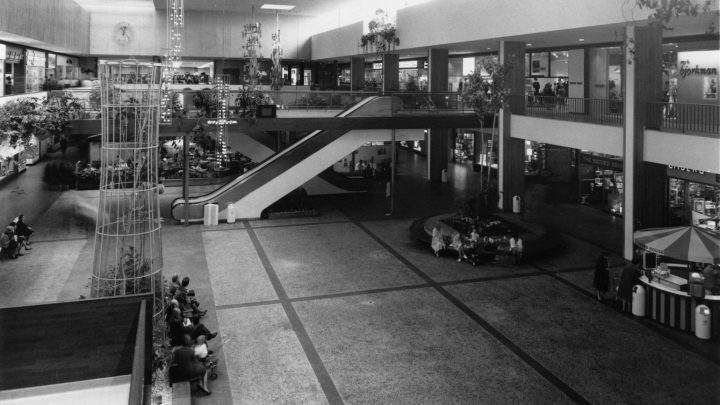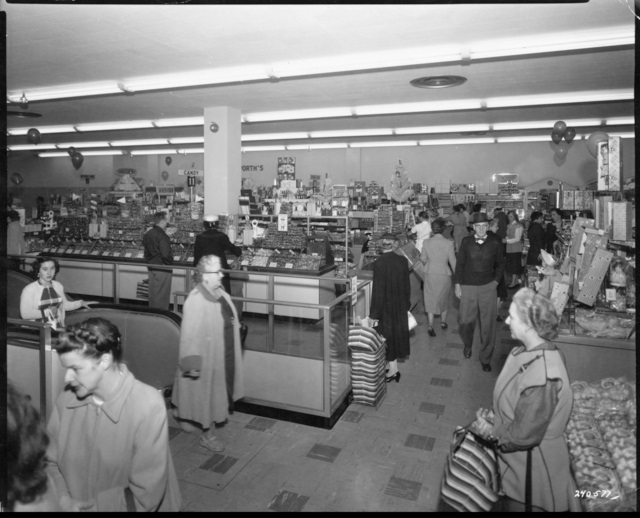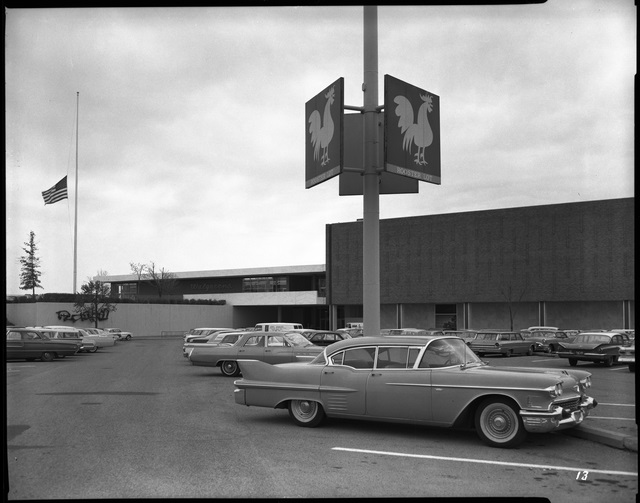
Malls aren’t dead. They’re in transition.

To a lot of Minnesotans, Southdale Center is just another mall. To Frank Edgerton Martin, a landscape historian who grew up around here, it’s an essential piece of history. We’re in the mall’s main court, looking up at a giant steel tree with abstract gold leaves, a sculpture by Harry Bertoia.
“I think it’s one of the most important midcentury sculptures around in a public space in the United States,” Edgerton Martin said.
It might seem odd to put one of the most important midcentury sculptures by a kiosk that sells phone cases. But in Edgerton Martin’s day, this mall was the place to be.

“As a child, my sister and I were just entranced by this place,” he said. “And everyone of my generation who grew up here remember coming here and how magical it was.”
For years now, people have been talking about the death of malls. But many have been doing well — even better than they were pre-pandemic. The ones that are finding renewed success are often going back to the reasons why malls were invented in the first place.
Southdale was the first indoor mall in the country. It opened in 1956, when suburbia was growing. The shopping center had clothing stores. But it also had European-style sidewalk cafes (minus the sidewalk). An orchestra even held balls there. The idea was to create a place where the community could escape from the freezing Minnesota winter and socialize without the fuss of going downtown.

“The local paper is quoted as saying, ‘White gloves are a thing of the past at Southdale,'” said Edgerton Martin. “Because in my mother’s generation, they wouldn’t think of going downtown without wearing white gloves.”
With the success of Southdale, malls took off, and over the years transformed shopping from a special occasion into an everyday, social activity. Think: mall rats.
“And we see malls depicted all the time in popular culture,” said Alexandra Lange, the author of “Meet Me by the Fountain,” a book about mall history.
By the 1990s, the United States had as many as 2,000 malls. They became a big business. “And that has a lot to do with the financing and ownership of malls,” Lange said. “By the time you get to the ’90s, there start to be these huge mall ownership conglomerates.”

Mall conglomerates prioritized tenants, mostly retailers, that could afford higher rents. That led to focusing less on the unique needs of locals and more on mass appeal, Lange said.
“I mean, it’s like anything else,” she said. “Once you have more, you have to standardize the product.”
Shopping centers just a few miles apart became indistinguishable. Meanwhile, in the early 2000s, retail took a hit. With the Great Recession, retail sales dropped to 35-year lows, and online shopping grew.
“That really started to make the “dead mall” narrative rise to the surface and when we started to see mass closure and mass failure of a lot of malls,” Lange said.
Underperforming malls leave suburbia with a big problem, because malls are often a major property tax payer.
“And so if the mall fails, it means that we have a vacant building that no longer is able to contribute to the community’s economy,” said Michael Burayidi, an urban planning professor at Ball State University in Indiana.
He said the mall needs to go back to its original vision as a multipurpose place. “Not just a place to buy things, but also a place where you can socialize, where you can have an experience.”

That’s what’s happening at Southdale Center in Minnesota — there’s a fancy gym, with co-working stations and pickleball. An upscale grocer will soon become an anchor tenant. Plus, high-end apartments have gone up nearby.
“And you would say, ‘Why would you want to live next to a shopping mall parking lot?'” said Edgerton Martin. “Well, they’re bringing in hotels and movies and theaters, putting them right next to it.”
It turns out in the mall industry, what’s old is new again.
There’s a lot happening in the world. Through it all, Marketplace is here for you.
You rely on Marketplace to break down the world’s events and tell you how it affects you in a fact-based, approachable way. We rely on your financial support to keep making that possible.
Your donation today powers the independent journalism that you rely on. For just $5/month, you can help sustain Marketplace so we can keep reporting on the things that matter to you.

















